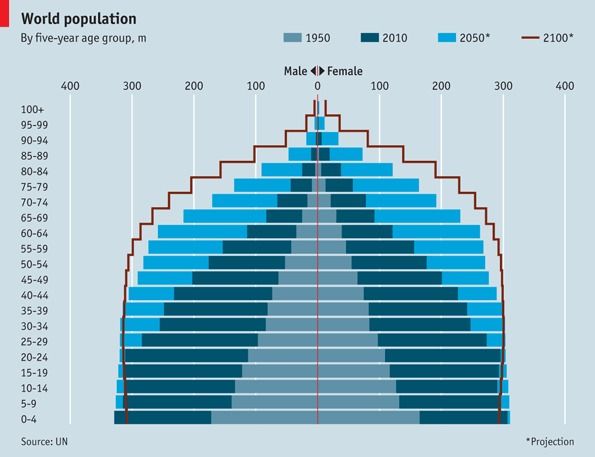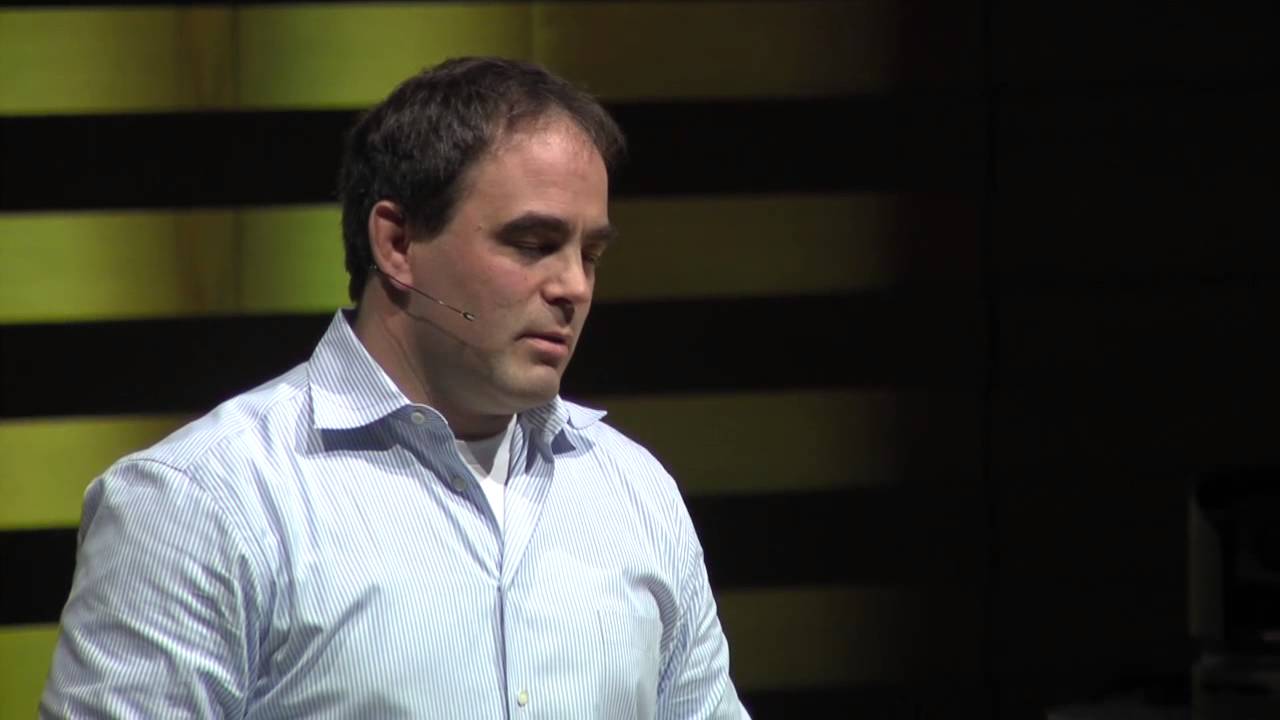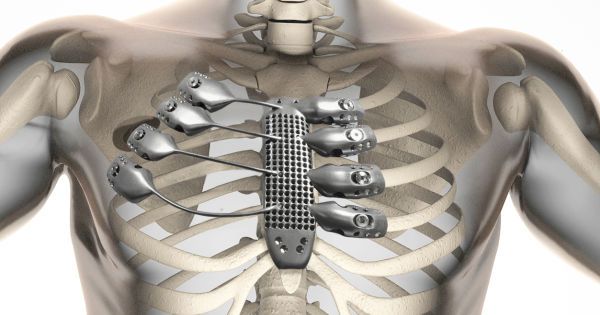https://youtube.com/watch?v=QwfH1gYkXTw
The young have always outnumbered the old, but as fertility rates drop and lifespans go up, this is starting to change.

https://youtube.com/watch?v=QwfH1gYkXTw
The young have always outnumbered the old, but as fertility rates drop and lifespans go up, this is starting to change.
https://www.youtube.com/watch?v=Fb3gn5GsvRk
FOLLOW on:
https://www.facebook.com/documentarytube.net
https://twitter.com/DocArchive

Geordie Rose, Founder of D-Wave (recent clients are Google and NASA) believes that the power of quantum computing is that we can ‘exploit parallel universes’ to solve problems that we have no other means of confirming. Simply put, quantum computers can think exponentially faster and simultaneously such that as they mature they will out pace us. Listen to his talk now!

When my daughter was just starting primary school, she would look inside a book for the pictures before reading the text. She was old enough to read without pictures, but she wanted to get a quick synopsis before diving in. “Look, Dad! a bunny is carrying a giant clock into a rabbit hole.”
This is my first article without pictures. At least none of Bitcoin, because the copper coin metaphors are tired and inaccurate. At the user level, owning bitcoin is simply your stake in a widely distributed ledger. Ownership exists only as strings of secret code and public code. There is no physical coin.
Since the only pictures in this post show a white rabbit with a big clock, let me give you the quick synopsis: The answer is “No”. Bitcoin will not end government, nor its ability to tax, spend—or even enforce compliance.
But there is an irony: Most lawmakers and regulators have not yet figured this out. They perceive a great threat to their national interests. That’s why Andreas M. Antonopoulos runs around the world. He briefs prime ministers, cabinets and legislators with the noble purpose of demystifying and de-boogieing Bitcoin.
Does Bitcoin Help Tax Cheats?
I accept the need for taxpayer reporting, measurement, and compliance initiatives. After all, it’s human nature to dislike paying taxes. Many individuals dodge taxes, if the perceived risk of being caught is low. Sociologists also point out that people are willing to cheat a system, if they perceive it to be sufficiently big or impersonal—i.e that their individual contribution is meaningless.
[ASIDE]: For this reason, Akamai Technologies ends their free-soda-&-snack policy whenever an office grows beyond 30 people (I learned this during a job interview a few years ago). People who would normally respect the policy begin pocketing free sodas for their home or friends, if (a) they no longer know everyone, or (b) they perceive the extra burden is just a drop in the corporate bucket, and not a burden on their office peers.
I suspect that most early proponents of Bitcoin are partially motivated by a desire for low taxes and privacy. While I don’t feel that these individuals are bad for the cause (after all, I am one), I feel that it is unfortunate that they appear to be the overwhelming majority of users & supporters. Let’s dismiss, for the moment, the fraction of voices that want to completely end government and taxation…If you believe in any taxes at all, then government needs compliancy mechanisms, including methods that measure, verify and ultimately arbitrate or prosecute offenders. (Don’t blame me…I’m not even the messenger here. Just an observer).
My point is that in their effort to control a country’s monetary supply (and the interbank loan rate, etc) and in their effort to ensure taxpayer compliance, a great many governments view Bitcoin as a threat. In the past, I felt that my job was to evangelize the public on the benefits of cryptocurrency, and to a great extent, that’s what CRYPSA is all about. But in recent months, I have become confident that Bitcoin will become ubiquitous. It doesn’t need me to be an evangelist. The freight train is now rolling downhill. But…

But as an engineer, author, speaker and occasional consultant, I have found a new calling. Like Andreas Antonopoulos (my idol), I have found a calling in de-boogieing Bitcoin to lawmakers and regulators. I demonstrate that (a) cryptocurrency represents far more of an opportunity than a threat to a national interests, and (b) the future is coming at ya’.
So, either: Stand pat; Get out of the way; or Hop on!
I can give an audience filled with old-school conservatives compelling reasons to “hop on”. Ultimately, blockchain technology coupled with true, permissionless, p2p transactions will shake up established mechanisms and enforcement protocols. They will force new ways of thinking. But cryptocurrency will not end the reign of government—nor even end the ability to tax, enforce and spend. It will simply change the way they do these things. It will also change the way we conduct polls, vote, arbitrate disputes, perform scientific research and much more.
Bitcoin and the blockchain are not just technologies. They transform the way in which many tasks are performed. But it’s not just about efficiency. These technologies offer mechanisms to level the playing field. T hey bring fairness and representation to processes that were opaque and perhaps even relied on the excuse of opaqueness.
hey bring fairness and representation to processes that were opaque and perhaps even relied on the excuse of opaqueness.
Ultimately, Bitcoin may render certain government departments redundant. Nations will begin to question their need to directly control monetary policy. The impact at the department level is no reason to fear Bitcoin. Overall, it represents great opportunity and not a threat. In my opinion, the changes will benefit everyone.
Bitcoin is not an us-against-them instrument. It is win-win. Of course, perception counts. Misunderstanding potential and confusing it for a threat is a fundamental problem. I share CRYPSA’s passion to help make it a very short-term problem.
Philip Raymond is CEO and Co-Chair of CRYPSA,
The Cryptocurrency Standards Association.

“The Snap—Ammunition’s third design for Polaroid, after last year’s Cube action camera and Zip instant mobile printer—is a decidedly modern instant camera. Unlike its predecessors, it doesn’t use ink cartridges. Instead, it uses inkless printing tech developed by a company called Zink. Heat from the printer reacts with dye crystals embedded in the photo paper to create the image.”

Italian neurosurgeon Sergio Canavero grabbed the world’s attention this past winter when he announced his plans to perform the first human head transplant. Many doubted that such an outrageous procedure would ever see the light of day. Now, Canavero has a date on the books.
Thirty-year-old Russian computer scientist Valery Spiridonov is set to become the world’s first head transplant patient in December 2017. Spiridonov suffers from a rare genetic muscle-wasting condition known as Werdnig-Hoffmann disease. There’s currently no known treatment.
As you might not want to imagine, the procedure will be filled with challenges and uncertainties. There’s the hair-raising possibility that the head will reject the body or vice versa. The spinal cord might not fuse properly. Even if everything goes well, there’s no telling whether Spiridonov’s mental capacities or personality will remain the same. He’s embarking on totally uncharted medical territory.

Is there anything 3D printers can’t do? A 54-year-old Spanish man, who had a cancerous tumor in his chest wall, was recently fitted with a 3D printed sternum and rib cage. While the first-of-its-kind implant seems like a Marvel Comics experiment with Adamantium, in reality, it was an ingenious, life saving medical solution that used lightweight yet sturdy, Titanium. The metal printing technique gave the surgeons at the Salamanca University Hospital in Spain the flexibility they needed to customize the complex and unique anatomy of their patient’s chest wall.
They brought in Anatomics, a Melbourne-based company that manufactures surgical products, to help create and print the implant. Based on the patient’s high-resolution CT scan data, the Australian team first created a 3D reconstruction of the patient’s chest wall and tumor so that the surgeons could plan with precision. Next, they used the 3D digital CAD file detailing the patient’s anatomy to build the customized implant, layer by layer, on Arcam’s $1.3 million electron beam metal printer.

We still have no idea how the brain produces conscious awareness. In this excellent short video produced by The Economist, various experts are called upon to explain the “hard problem” that is consciousness, and how scientists might solve this profound mystery.
For the video, The Economist gathered together an impressive collection of philosophers and scientists, including David Chalmers, Daniel Dennett, Christof Koch, Janet Metcalfe, and Marcus Raichle. Topics discussed include the evolution of consciousness, the binding problem, and theory of mind.
H/t Mind Hacks!

“The ice the scientists found measures 130 feet (40 m) thick and lies just beneath the dirt, or regolith, or Mars.
‘It extends down to latitudes of 38 degrees. This would be like someone in Kansas digging in their backyard and finding ice as thick as a 13-story building that covers an area the size of Texas and California combined,’ Bramson said.
Such an extensive ice sheet had never been seen at these latitudes.”
A giant slab of ice as big as California and Texas combined lurks just beneath the surface of Mars between its equator and north pole, researchers say.
This ice may be the result of snowfall tens of millions of years ago on Mars, scientists added.
Mars is now dry and cold, but lots of evidence suggests that rivers, lakes and seas once covered the planet. Scientists have discovered life virtually wherever there is liquid water on Earth, leading some researchers to believe that life might have evolved on Mars when it was wet, and that life could be there even now, hidden in subterranean aquifers. [Photos: The Search for Life on Mars].